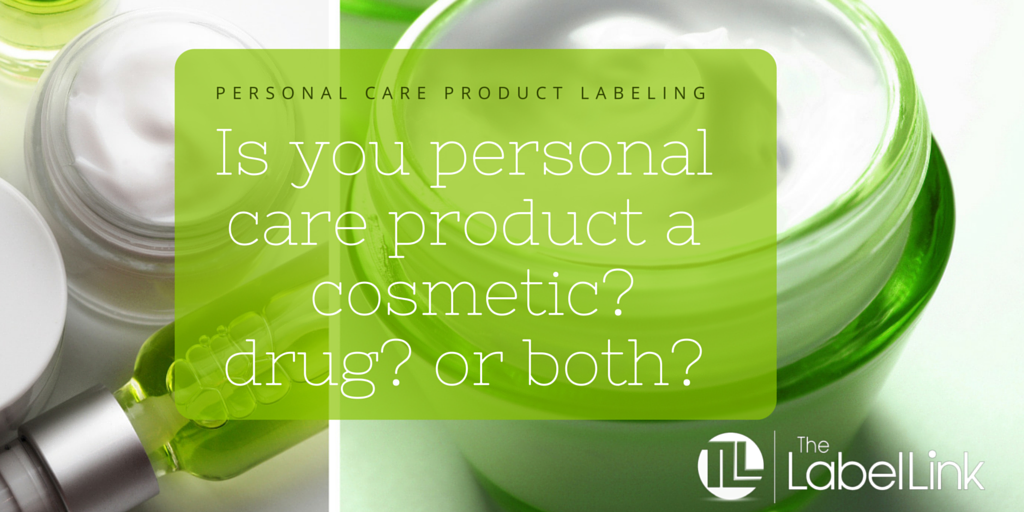
Personal Care Products Manufacturing: What You Need to Know About Your Labels
The term “personal care products” is a loose term in the industry. Sure, drug stores and department stores use this term to describe products, but when it comes to regulations, this category isn’t quite as well-defined.
As you begin your personal care products manufacturing process, one of the first questions you’ll ask yourself is what you should put on your personal care product labels. The answer is, it depends.
Do you make cosmetics? Drugs? Both? There are many types of products that fall under the personal care title, yet “personal care” itself is not a product category defined by law. Sometimes, a product can cross barriers and be considered both a cosmetic and a drug. To make sure you meet all of the U.S. Food and Drug Administration (FDA) requirements, you must pay careful attention to have proper labeling.
Here are a few things you must know as you start to plan your labels.
Is Your Personal Care Product a Cosmetic?
The term “cosmetic” most often refers to “skin moisturizers, perfumes, lipsticks, fingernail polishes, eye and facial makeup preparations, shampoos, permanent waves, hair colors, some toothpastes, and deodorants,” according to the FDA. These are determined by products that have the intended use of being “rubbed, poured, sprinkled, or sprayed on, introduced into, or otherwise applied to the human body… for cleansing, beautifying, promoting attractiveness, or altering the appearance.”
Typically, you do not need to take any special FDA regulations in mind when marketing and labeling your product.
But wait!
Before you call your personal care product a cosmetic and click away to another article, you might want to be certain there are not additional regulations you must be aware of when creating your labels.
Could Your Cosmetic Product be Regulated Like a Drug?
Before you shake your head no to this question, take a look at what the FDA has to say about this.
By law, items such as “…skin protectants (such as lip balm and diaper ointments), mouthwashes marketed with therapeutic claims, antiperspirants, and treatments for dandruff or acne” are regulated in the same way as a drug.
To know if your product falls under this category, you must determine if it can be used for two intended purposes. For example, many shampoos are used to treat dandruff. Or, many lip gloss products claim to moisturize lips.
If your product must be regulated like a drug, you must receive premarket approval by the FDA to ensure you do not specify, “conditions whereby they are generally recognized as safe and effective, and not misbranded.” The ingredients in your product are also subject to FDA premarket approval. The only exception to that rule is color additives.
The Labeling Differences
There are specific labeling differences for each product category – cosmetics and drugs. Soaps also have their own set of regulations. Let’s take a closer look at each:
Cosmetic Labels
Cosmetics are considered misbranded by the FDA if:
- The labels are false or misleading;
- The label does not disclose all of the manufacturer’s information;
- The label does not disclose the quantity of contents;
- The required information is not prominently displayed;
- The container itself or its fill is misleading.
Drug Labels:
Over-the-counter (OTC) drugs must follow all of the OTC drug labeling requirements. These requirements are very specific. You can get all of the details about them here.
It’s important to note that you must have both cosmetic and OTC drug labeling if your personal care product falls into both categories. For example, the FDA says you must disclose all of the drug ingredients in alphabetical order as “active ingredients,” and then list the cosmetic ingredients in descending order of predominance as “inactive ingredients.”
What About Soap?
Soap can often blur the lines a little bit. It’s not a cosmetic item, nor is it a drug (usually). That’s why the FDA has its own category for this type of product and label.
Soaps are defined as “articles… for cleansing” by the FDA. More specifically, a product is considered a soap when:
- “The majority of the nonvolatile matter in the product consists of an alkali salt of fatty acids and the product’s detergent properties are due to the alkali-fatty acid compounds, and
- The product is labeled, sold and represented solely as soap.”
This means that if the soap contains detergents, is used for cosmetic purposes as well as cleansing, or is made up primarily of alkali salts of fatty acids, it is not considered a soap, but instead a cosmetic.
Likewise, if the soap is intended to treat, cure or prevent disease, or to affect the structure or any function of the human body, it is considered a cosmetic and a drug.
Question: What type of product do you manufacture?
There is a lot of blurring between the lines in the personal care product field. Because “personal care” is not its unique category, it can sometimes be difficult to determine which area you fall under for labeling regulations.
